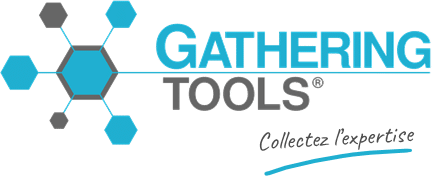The commercial management controller plays a key role in both the operational and strategic steering of the company: setting objectives, developing pricing and margins, analyzing profitability by product and by market, assessing distribution costs… They are a vital support for the sales teams — provided they have the right resources and tools.
In this article, we’ll explore the operational role and on-the-ground benefits of effective commercial management control, illustrated with real-world examples from Adidas and Edilians.
Using Field Insights to Fuel a Virtuous Cycle

As mentioned in a previous article, the management controller and the sales director have every reason to work hand in hand. Strong collaboration between these two departments helps improve performance management and refine sales forecasting. This benefits not only the management controller, but also the sales team. With access to financial data, the sales department gains valuable insights for launching new products or entering new markets—such as margin calculations, selling prices, cost prices, and available resources.
So, how can this collaboration be optimized to create a truly virtuous cycle?
Sales teams are often reluctant to collaborate with management control, which is seen more as a constraint than an opportunity for performance. And yet, having access to reliable figures is a major asset. That’s why it’s essential to define the right indicators to monitor: customer acquisition costs, churn rate, revenue per sales rep, product margins, sales trends, and more. Simply having access to this financial data is already a driver of progress for sales teams, providing them with concrete, actionable goals.
But to achieve this, the management controller must have access to reliable, concrete, and up-to-date field data.
To avoid placing a time-consuming burden on the sales management, the collection and consolidation of this information should be automated as much as possible. By simply filling in only the fields that concern them in a form with clear instructions, sales managers and team members can provide the controller with accurate and actionable information.
In return, they’ll benefit from more relevant and insightful guidance from the management controller.
Case Studies: Adidas and Edilians

Sales teams often create numerous dashboards to track forecasts, monitor activity, or analyze sales performance. Their tool of choice is usually Excel, a familiar and flexible spreadsheet solution.
However, Excel is far from ideal when it comes to consolidating data from multiple salespeople or teams. Ensuring the security and reliability of these shared files is a real challenge—yet these are critical factors for any management controller.
To overcome these limitations, a powerful alternative exists: Gathering Tools. This is the solution adopted by Adidas France and Edilians to support their commercial management control efforts. Let’s take a closer look at the challenges they faced.
Edilians: Forecasting Needs and the Challenge of Data Traceability
Edilians, a supplier of building materials for the construction sector, needed better visibility into upcoming projects to avoid stockouts on highly specific products.
Previously, sales forecasts were shared orally or via email, then manually entered into Excel files—a time-consuming and error-prone process, with little to no traceability.
With Gathering Tools, sales reps now fill out a standardized form every month to share their forecasts with sales directors, who then pass them on to the management controller.
In return, the sales teams receive data on actual revenue vs. targets and forecasts—valuable insights to help organize their activity.
👉 Check out the full interview with Sylvain Moreau, CIO at Edilians.
Adidas France: A Need for Reliable, Time-Saving Forecasting Tools
Adidas France aimed to roll out a solution for managing sales projections. Until then, the collection of key business indicators from sales directors relied on exchanging Excel workbooks—leading to errors and version control issues.
With Gathering Tools, the company implemented input forms designed to look and function like Excel, ensuring a seamless transition. The result: a four-day productivity gain per month for the management controllers, with no extra workload for the sales team.
Moreover, data quality and security have been significantly improved through the use of blocking controls, which automatically verify the completeness and consistency of mandatory inputs.
👉 Discover the full testimonial from Frédéric Gaudin, Head of Functional Domains – Sales & Marketing at Adidas France.
Commercial management control is a true asset to the sales department—provided it delivers data and insights that genuinely support business development.
But to rebuild its image with sales teams and offer them the best possible support, it needs the right tools—tools that ensure reliable field data collection without adding extra work for the teams. And it all starts with Gathering Tools.










